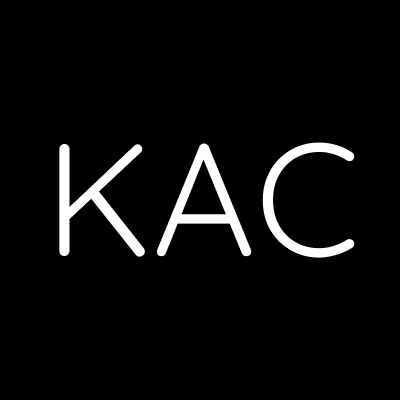step 1
create the ideation workshop kickoff doc
Looking at the kickoff template, you’ll notice the language is more common to product and tech orgs, like scope, dependencies, etc. The questions create the foundation for an unforgettable workshop experience specifically for ideating within software + product development teams!
No matter the style of the workshop you’re planning, the first step should always be to learn as much as possible about the workshop's goals and expected outcomes. And that’s where this kit starts
Specifically, it is important to focus on articulating the goals, understanding the problem space, and outlining the expected outcomes/outputs of the workshop.
homework
Requiring ‘pre-reads’ or ‘homework’ for a workshop gives the group a head start. They will be at a common level of understanding. You’ll notice that the homework will create psychological safety across levels, departments,
and titles.
With the support of your core stakeholders, identify the necessary context to assign as homework to shape the group's starting point. Focus on content around the:
problem space
summarized user research reports
product strategy summaries
competitive research
business objectives, etc.
I like to frame this as ‘homework,’ but the main intention is to inform and level set.
workshop agenda
planning logistics
When selecting the location, it’s essential that your space has the right tech equipment and physical space you need.
And to make it unforgettable, you’ll want to make sure you have the space for energizers, room to move around tables, space to place personal items, and a spot for refreshments.
how-might-we’s + what-if’s
HMWs (How Might We): These are questions framed to inspire creative thinking when tackling a problem. They usually start with "How might we..." and are deliberately open-ended. For example, "How might we improve customer satisfaction?"
HMWs encourage brainstorming and divergent thinking. They invite different perspectives and solutions, fostering innovation in problem-solving.
What-Ifs: These are scenarios or hypothetical situations you explore to understand potential outcomes or consequences. It's like playing out different scenarios in your mind.
What-Ifs help you anticipate and plan for various outcomes, reducing risks and increasing preparedness. They're like a mental rehearsal for decision-making.
Both HMWs and What-Ifs are tools to shift your mindset from a fixed perspective to a more open and adaptable one, which is super important in problem-solving. So, when you're tackling a complex issue, don't hesitate to throw some HMWs and What-Ifs into the mix to spice up your problem-solving stew! 🍲😄
In the next step, we will collaborate with your workshop stakeholders to ensure quality outcomes and effective results.
remote vs. in-person
When selecting between remote vs. in-person workshops, constraints often pre-determine this decision. In my opinion, an in-person workshop will always yield better participation, higher engagement, and stronger outcomes (assuming everything else is equal). Consider the tradeoffs of remote vs in-person workshops. Either can be extremely effective.
Pros of Remote:
👍 Content is already digitized for summation and delivery!
👍 Ease of facilitation! (outside of the technology)
👍 Lower cost!
Cons of Remote:
👎 Tech problems!
👎 Losing layers of quality!
👎 Losing layers of collaboration!
There are two key benefits:
The doc will be the core content to ensure quality outcomes; much of the content in the deck comes directly from this kickoff doc. This is the key to unlocking productivity and effective results.
Aligning with your stakeholders this early in the process will create deeper trust. In the next step, we’ll discuss reviewing the doc with leaders.
workshop kickoff doc
problem-framing
The biggest mistake I see in workshops is not having a well-defined problem. Without a well-defined problem, you’ll find yourself spending the majority of the workshop crafting and defining the bounds of the problem space and not generating solution ideas.
My recommendation is to use a proven framework to support the teams in pre-defining the problem space. You can even have multiple problem statements. The more statements, the more time is necessary.
To prioritize the problems, consider what decisions need to be made. The more important decision space will be front-loaded in the workshop. Make tradeoffs wisely.
I’m a big fan of JTBD by Anthony Ulwick, which describes the problem to be solved in a human-centered format. I also like defining the bounds of the problem with Critical User Journeys by Google.
However, there are many different frameworks you can use. ProductPlan has an excellent guide for choosing the right problem-framing.
Make sure that the problem-framing approach selected works well with your team planning process and agile practice.
the agenda
Crafting your ideation workshop agendas and the deck will be super easy once you’ve answered the questions in the kickoff doc.
Based on your workshop's goal(s), create the agenda by working backward to solve for or answer one variable at a time…
expected outcomes + deliverables
👇
activities + energizers
👇
the logistics + specific needs
This is how I like to craft the agenda of a workshop that doesn’t already have a predefined structure like a ‘Design Sprint’ by Google. No need to do this part if you only have the logistics and smaller details - just add in your logistics and any special needs.
Make sure to have time allocated for
Weather delays
Breaks + Lunches
Special Guests
One of the most common mistakes I see in workshops is not planning for breaks - we all need ‘em. Getting up and moving around will also rejuvenate people's attention and focus.


